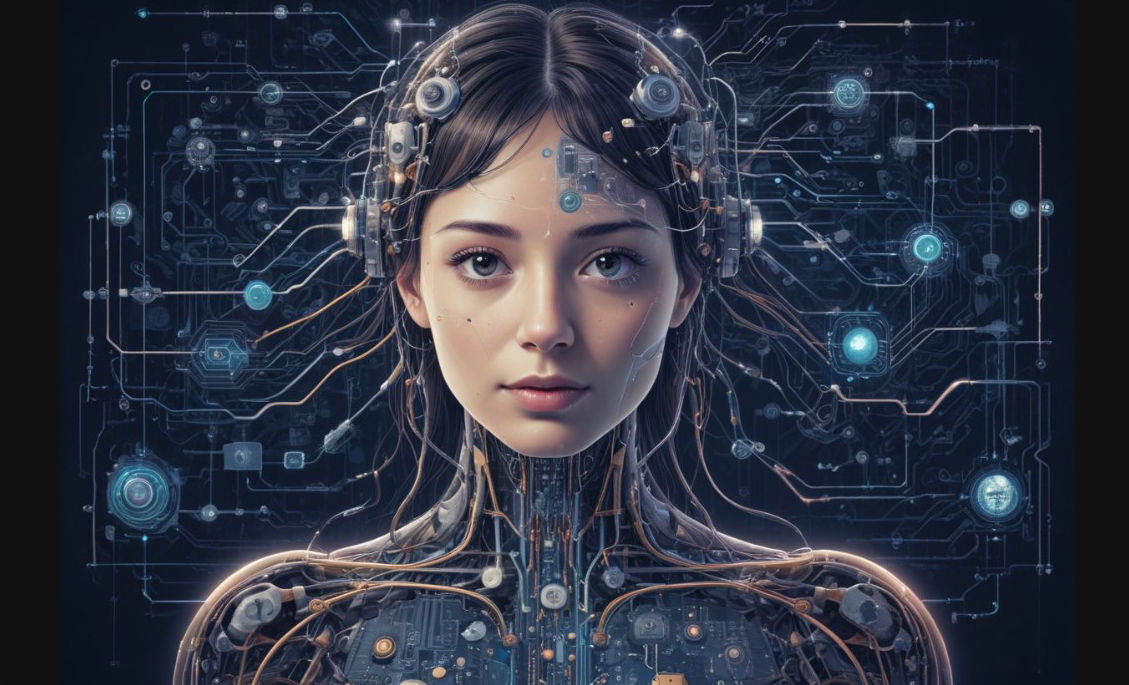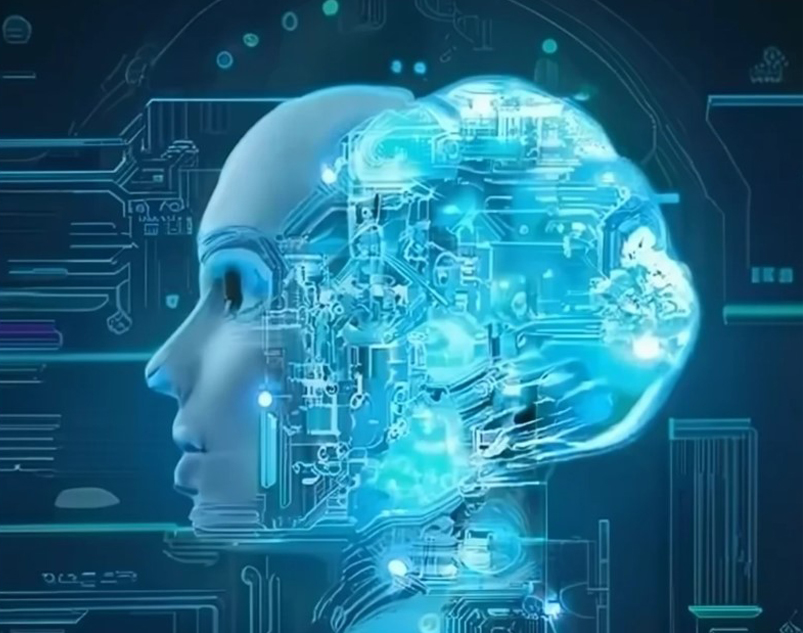Humanizing AI: Transforming Machines into Trustworthy Partners

Abstract
Artificial intelligence (AI) is rapidly transforming our world, but can these powerful machines ever truly connect with us? This blog post delves deep into the concept of humanizing AI, exploring its meaning, methods of implementation, benefits, and the profound impact it can have on our future interactions with technology.
Introduction
Have you ever felt frustrated talking to a chatbot that just couldn’t understand your problem? Imagine instead that the chatbot responds with empathy, humor, and helpful advice, making the experience as pleasant as conversing with a human friend. Welcome to the future of humanized AI.
What is Humanizing AI?
Humanizing AI is about infusing artificial intelligence with qualities typically associated with humans, such as personality, empathy, and the ability to communicate naturally. It’s not about making AI sentient but rather about making it more relatable, approachable, and ultimately more useful in our daily lives.
Picture waking up to an AI assistant that not only reminds you of your appointments but also suggests a new recipe based on what’s in your fridge and your dietary preferences. This kind of seamless, intuitive interaction is the promise of humanized AI.
How Does Humanizing AI Work?

There are two primary approaches to humanizing AI:
Text-Based Methods:
- Using Active Voice and Conversational Language: Making interactions more engaging and natural.
- Injecting Humor, Metaphors, and Storytelling Elements: Adding a human touch to AI communications.
- Incorporating Transitional Phrases: Creating a natural flow in conversations.
For instance, Replika, a chatbot designed to be a conversational companion, uses sophisticated algorithms to adapt its language style to match the user’s, creating a more engaging and personalized experience.
Interface Design:
- Chatbots that Use Conversational Language and Emojis: Making interactions feel more personal and less mechanical.
- Virtual Assistants with Names and Personalities: Enhancing relatability.
- Robots with Expressive Body Language and Facial Features: Improving non-verbal communication.
By combining these methods, developers can create AI systems that feel less like machines and more like companions or collaborators.
Benefits of Humanized AI

Humanized AI offers numerous benefits, significantly enhancing user experience and societal impact:
- Enhanced Customer Service: AI that resolves issues quickly while empathizing with users’ frustrations makes for a more satisfying experience.
- Improved Learning and Education: AI tutors that adapt to each student’s learning pace and style, providing customized support and encouragement.
- Increased Accessibility: Humanized interfaces open doors to new technologies for people with disabilities, promoting inclusivity.
- Reduced Stigma: By making AI seem less intimidating, humanization fosters greater public acceptance and collaboration between humans and machines.
The Impact of Humanized AI
The impact of humanized AI extends beyond individual interactions, with the potential to reshape entire industries and social structures:
- The Future of Work: Humanized AI systems can act as intelligent collaborators, taking on tedious tasks and freeing up human workers for creative endeavors.
- Personalized Healthcare: AI-powered medical assistants can offer personalized health advice and emotional support, improving patient outcomes. For example, companies like Babylon Health are already using AI to provide personalized health assessments and advice.
- Smarter Cities and Infrastructure: Humanized AI systems can manage traffic flow, optimize energy consumption, and create more responsive urban environments.
However, it is crucial to acknowledge potential challenges. Overly humanized AI could lead to unrealistic expectations or emotional manipulation. Transparency and responsible development are essential to ensure that humanized AI serves humanity beneficially.
Ethical Considerations and Challenges
While humanized AI offers many benefits, it also raises ethical questions. Issues such as data privacy, emotional manipulation, and the potential for AI to create unrealistic expectations must be addressed. Developers must prioritize transparency and responsible AI practices.
Case Studies and Real-World Applications
Highlighting specific examples can illustrate the practical impact of humanized AI and inspire confidence in its potential. Consider the following case studies:
- Healthcare:
- Babylon Health: Babylon Health uses AI to provide personalized health assessments and advice. Its chatbot engages patients in natural conversation, helping them manage their health proactively.
- Woebot: Woebot is a mental health chatbot that uses cognitive-behavioral therapy (CBT) techniques to help users manage their mental health. Its conversational style and empathetic responses make it a valuable tool for those seeking mental health support.
- Customer Service:
- H&M’s Chatbot: H&M’s AI chatbot assists customers with shopping queries, providing personalized fashion advice based on the user’s preferences and purchase history. The chatbot’s friendly tone and use of emojis make the interaction enjoyable.
- Bank of America’s Erica: Erica is an AI-driven virtual assistant that helps customers with their banking needs. It uses natural language processing to understand and respond to queries in a human-like manner, improving customer satisfaction.
- Education:
- Duolingo: Duolingo’s AI-powered language tutor adapts to each learner’s pace and style, providing personalized feedback and encouragement. The app’s playful interface and conversational prompts make learning engaging and effective.
- Carnegie Learning: Carnegie Learning’s AI-driven math tutor personalizes learning experiences for students, using natural language processing to provide explanations and encouragement in a conversational tone.
Future Trends and Predictions
Looking to the future, several trends and predictions highlight the ongoing evolution of humanized AI:
- Advanced Emotional Recognition: Future AI systems will likely incorporate more sophisticated emotional recognition technologies. These advancements will enable AI to respond to human emotions with greater accuracy, enhancing empathy and user satisfaction.
- Multimodal Interactions: AI will increasingly utilize multimodal interactions, combining text, voice, and visual cues to create more immersive and natural user experiences. This approach will make AI interactions feel even more human-like.
- Ethical AI Development: As humanized AI becomes more prevalent, there will be a greater emphasis on ethical AI development. Ensuring transparency, fairness, and accountability in AI systems will be crucial to maintaining public trust and avoiding potential pitfalls.
- Cross-Industry Applications: Humanized AI will continue to expand across various industries, from retail and finance to healthcare and education. Each sector will find unique ways to leverage AI’s human-like qualities to enhance user experiences and improve outcomes.
Conclusion
As we journey into this new era of human-AI collaboration, each interaction we have with AI is a step toward a future where technology enhances our lives in deeply personal ways. Humanizing AI is not about replacing human interaction; it is about building a future where humans and machines work together seamlessly. By infusing AI with human-like qualities, we can create technology that is not just powerful but also beneficial, empathetic, and even delightful. Together, we can shape a future where machines not only understand us but also connect with us on a human level.
To embark on the journey of integrating humanized AI into your business and fostering deeper connections with your customers, reach out to us at hello@cloudjune.com . Discover how CloudJune can implement AI-powered chatbots that engage in meaningful conversations, driving both customer satisfaction and business growth.




